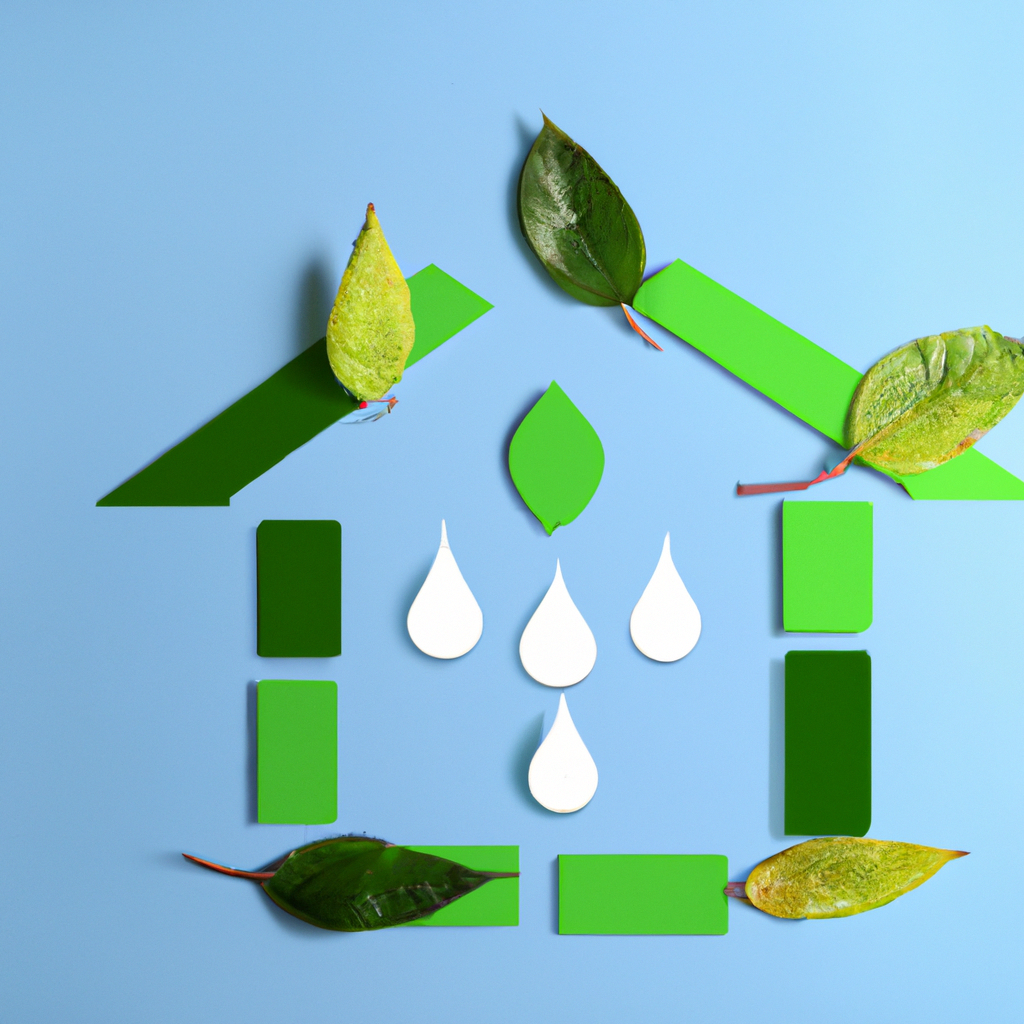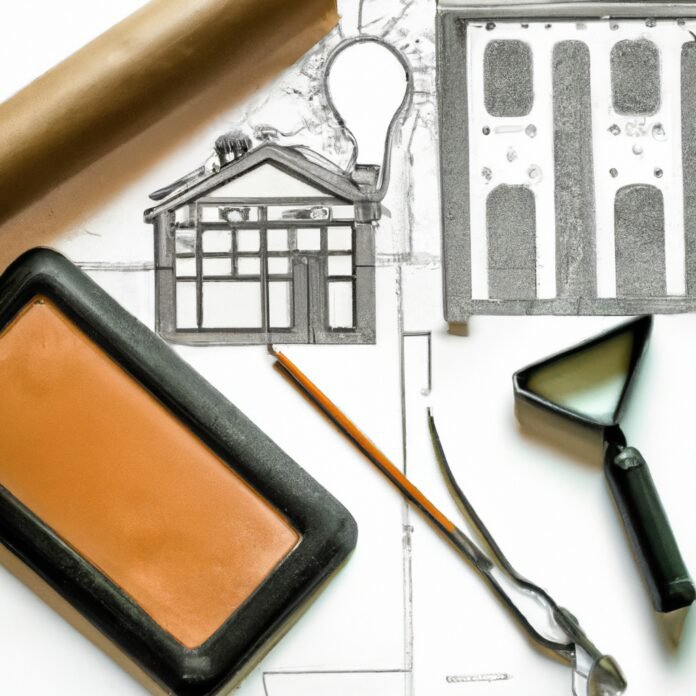Are you looking for ways to make your home more environmentally friendly? Modern home design and renovation feature a variety of innovative eco-friendly strategies to help your home become more sustainable and energy-efficient while giving it an all-new look and feel. We’ll explore the top eco-friendly home design and renovation techniques so you can incorporate them into your own home redesign.
1. “Harmony in Green: Unleashing the Magic of Eco-Friendly Home Design”
Green designs offer breathtaking ideas to foster harmony in homes. These eco-friendly styles are designed to promote fresh, healthier atmospheres and have a huge range of options to choose from.
- Lighting: Park those bright, artificial lights and try outdoor solar or motion sensor lighting! These kinds of lighting gives a natural and alluring feel which works for most spaces.
- Texture: Textures are instrumental when creating harmony in a home. Consider natural materials such as wood, rattan, bamboo, or textiles such as cotton and hemp for use as curtains.
- Furnishings: Invest in multi-purpose furniture pieces that have maximum longevity. Choose items made from sustainable materials that blend in with the overall ecofriendly home design concept.
Where possible, use items that are locally created. This can be as simple as using woven baskets, wood, rattan, and so on. Supporting local artisans is an excellent way to ensure that one’s home is not only beautiful but also responsible. Additionally, embrace any imperfections in the furniture and items one has, as they add personality!
Plants and vegetables are important components of green home designs. From simple kitchen herbs to larger scale gardens, plants foster a liveliness that’s essential. It’s best to select native plants as they have adapted best to the area’s environment and are very effective in beautification and pollination. Outdoor spaces with pond systems, allotments, and other such features greatly contribute to the vibrancy of a home. Regular maintenance of plants and gardens, of course, helps cultivate the overall aesthetic.
Shades of green are also pivotal in creating a harmony amongst the various components of a home. Natural green hues add an earthy feel to any living space. Also, considering the relevance of green in nature, these shades often evoke peace and calm. Other colors that blend in well, include soft blues, reds, yellows, whites, creams, and so on. A unified blend across textures, objects, and colors create a serene green space – perfect for a home.
2. “Reviving Nature’s Embrace: A Guide to Sustainable Home Renovation”
Sustainable home renovation – that is, renovation that is both environmentally friendly and financially responsible – has been gaining traction in recent years. As households and businesses alike reckon with the effects of global warming and climate change, one area in which everyone can take control is how they use and improvements their properties. The following guide will help you get started on sustainable home renovation projects around your dwelling.
Upcycle First
Before you consider purchasing replacement parts or ordering new furniture, take a look around and see if anything in your current home setup can be saved and reused. With some imagination and a few DIY tools, you can transform the materials that you already have in a stylistic, environmentally friendly way. Not only will this help you save money and energy, but you can also make something entirely unique.
Harness Passive Energy
- Make use of passive energy sources. Start by checking your building’s insulation, and install windows that are designed to keep energy in during cold months and out during warmer months.
- Look into installing solar panels as an affordable means of reducing your electricity bills.
- Position furniture and windows strategically to keep your home naturally cooler during the summer and warmer during the winter.
Reduce Waste and Improve Efficiency
- Recycle and refuse to buy new materials if the old ones can be upcycled. Make use of second-hand furniture and repurpose items that have already been used.
- When replacing parts, seek out energy efficient and water efficient appliances.
- Reuse fixtures and fittings when possible, replacing only where necessary.
- Make sure to install moisture-proof paint on walls, floors, and ceilings to create a moisture barrier, as well as insulation to reduce your energy use.
Choose Low-Impact Products
- Look for recycled and sustainable materials when shopping for fixtures, fittings, and décor.
- Choose natural materials such as stone, brick, wood, and cork instead of synthetic materials to reduce air pollution.
- Install integrated water-saving fixtures, such as low-flow showers, dishwashers, and toilets.
- Make use of environmentally safe cleaning products and paints to keep your home pollutant-free.
Implementing these techniques and approaches into your renovation project will help you revamp your home in an ecologically friendly and responsible manner. In this way, your sustainable renovation project can be a contribution towards preserving the global environment.
3. “From Waste to Wonder: Transforming Your Home with Eco-Conscious Design”
Going green has never been more stylish! We don’t have to sacrifice style to be more conscious of the environment. Today’s eco-friendly options for home design can turn even the most mundane spaces into works of art.
- Recycle and Reuse: Look for unique pieces made from recycled materials. Whether it’s an old dresser upcycled into a bathroom vanity, or mannequins repurposed as shelves, beautiful statement pieces can be found in the most unexpected places.
- Shop Local: Buying from local craftspeople and artisans cuts down on traveling costs, reducing the environmental impact of your transaction. You get to support small business owners while also creating a more sustainable home.
- Experience Nature: Biophilic design is all about bringing nature indoors, and it doesn’t have to involve a major renovation. Use natural materials such as wood grain, cork, or stone. Hang up photos of nature scenes, or use plants to add oxygen and life to the living room.
Lighting: Forgo traditional lightbulbs in favor of LED or other energy-efficient options. You can also take advantage of natural light with skylights, solar tubes, and other solar-powered lighting options.
Décor: Natural fabrics such as hemp, cotton, and jute are great for accessories and rugs. And if you’re looking for something a bit more exotic, you can find handcrafted décor with eco-friendly material like seagrass, bamboo, and rattan.
Furniture: When it comes to furniture, there are lots of eco-friendly choices. Look for pieces with certified sustainably harvested wood, or enjoy the benefits of reclaimed wood. In addition, look for furniture made with natural fabrics such as organic cotton and wool.
4. “Boldly Building a Greener Tomorrow: The Art of Eco-Friendly Home Design
It’s time to take action and take the steps to crafting an eco-friendly home. Here’s how to do it:
Invest in Renewable Energy Sources
- Solar panels are one of the most popular sources of renewable energy.
- Smart thermostats help regulate and optimize energy use.
- Replace incandescent bulbs with LED lights.
Look for Eco-Friendly Building Materials
- Try recycled materials for a more sustainable approach.
- Choose building materials that are pre-manufactured to minimize energy consumption.
- Find sustainably sourced wood options.
Look for Energy Efficient Appliances
- Choose heating and cooling systems that are energy efficient.
- Find Energy Star appliances and machines that have earned the highest levels of energy efficiency.
Improve Your Home’s Insulation
- Look for ways to improve the insulation in your home.
- Not only will this help you save energy, but it can also improve the energy efficiency of the home.
Creating an eco-friendly home does not have to be a daunting task. With a few simple steps, you can be well on your way to a greener tomorrow. Remember, every small decision you make towards creating a greener home counts.
Achieving an eco-friendly home design and renovation isn’t just about helping the planet in the long run; it also increases your home’s energy efficiency, lowers energy costs, and enhances the experience of living in your home every day. With sustainable materials, thoughtful decisions, and a little bit of creativity, you can make your home not only greener but also more beautiful.



